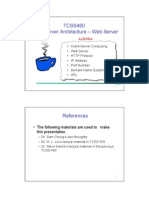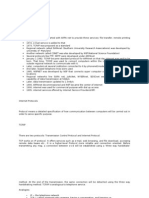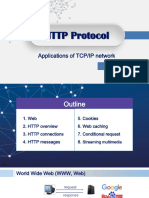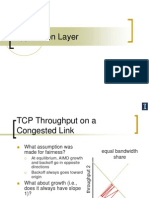0% found this document useful (0 votes)
22 views41 pagesLecture 3 Application Layerss
The document discusses HTTP connections, HTTP methods, URIs, XML, and DNS. It covers how HTTP connections work, defines common HTTP methods like GET and POST, explains the components of a URI, provides examples of using XML and JSON to represent data, and describes how DNS maps between domain names and IP addresses in a decentralized manner.
Uploaded by
hicam12309Copyright
© © All Rights Reserved
We take content rights seriously. If you suspect this is your content, claim it here.
Available Formats
Download as PDF, TXT or read online on Scribd
0% found this document useful (0 votes)
22 views41 pagesLecture 3 Application Layerss
The document discusses HTTP connections, HTTP methods, URIs, XML, and DNS. It covers how HTTP connections work, defines common HTTP methods like GET and POST, explains the components of a URI, provides examples of using XML and JSON to represent data, and describes how DNS maps between domain names and IP addresses in a decentralized manner.
Uploaded by
hicam12309Copyright
© © All Rights Reserved
We take content rights seriously. If you suspect this is your content, claim it here.
Available Formats
Download as PDF, TXT or read online on Scribd
/ 41





















































































